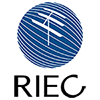The 8th RIEC International Symposium on Brain Functions and Brain Computer
Information
*The talks will be given in English.
Date
February 13, 2020 – February 15, 2020
Venue
Conference Room, Laboratory for Nanoelectronics and Spintronics, Research Institute of Electrical Communication (RIEC), Tohoku University [Access]
WEB site
www.nanospin.riec.tohoku.ac.jp/RIEC_Sympo/2020_Feb
Registration
– Closed
Organizers
Symposium Chair
Shigeo Sato (Tohoku University)
Program Committee
Takahiro Hanyu (Tohoku University)
Yoshihiko Horio (Tohoku University)
Ayumi Hirano (Tohoku University)
Hideaki Yamamoto (Tohoku University)
Kiyotaka Naoe (Tohoku University)
Yasunari Takaura (Tohoku University)
Yasunori Yamanouchi (Tohoku University)
Masato Morishima (Tokyo Electron Limited)
Speakers: TFC Special Session
Yoshihiko Horio (Tohoku University)
Kiyotaka Naoe (Tohoku University)
Masato Morishima (Tokyo Electron Limited)
Yueh–Hsuan Weng (Tohoku University)
Pawel Herman (KTH Royal Institute of Technology)
Hidekazu Kanemitsu (Kanazawa Institute of Technology)
Time Schedule
- February 13
- 13:00 – 13:05
- Opening Remarks
- A. Hirano–Iwata (Tohoku University)
- Special Session 1
“Spintronics–based edge computing hardware fundamentals” - Chair: S. Sato
- 13:05 – 13:25
- [SS1–1] Analog neuron circuit for edge computing
- S. Sato, Y. Tamura, S. Moriya, T. Kato, H. Yamamoto, M. Sakuraba, Y. Horio, J. Madrenas (Tohoku University)
- 13:25 – 13:45
- [SS1–2] Impact of nonvolatile–logic design techniques for spintronics–based edge AI computing
- M. Natsui, T. Chiba, T. Hanyu (Tohoku University)
- 13:45 – 14:05
- [SS1–3] Compatible synapses and neurons for future spiking neural networks
- A. Kurenkov, S. DuttaGupta, C. Zhang, S. Fukami, Y. Horio, H. Ohno (Tohoku University)
- 14:05 – 14:20
- Break (15 min)
- General Session 1
- Chair: S. Moriya
- 14:20 – 14:50
- [GS1–1] Design flow for SIMD–based hardware implementation of spiking neural networks
- J. Madrenas, M. Zapata, J. A. Oltra, B. Vallejo, S. Sato (Polytechnic University of Catalonia)
- 14:50 – 15:20
- [GS1–2] FORCE training networks of spiking neurons to perform arbitrary dynamics
- W. Nicola, C. Clopath (University of Calgary)
- 15:20 – 15:50
- [GS1–3] Distributed correlates of working memory phenomena in a large–scale multi–network model
- P. Herman, F. Fiebig, A. Lansner (KTH Royal Institute of Technology)
- 15:50 – 16:00
- Break (10 min)
- General Session 2
- Chair: H. Yamamoto
- 16:00 – 16:30
- [GS2–1] Extracting image statistics by human and machine observers
- C.–C. Chen (National Taiwan University)
- 16:30 – 16:50
- [GS2–2] Distal axon as a potential oscillator for network activities in the hippocampus
- H. Kamiya (Hokkaido University)
- 16:50 – 17:10
- [GS2–3] Multi–scale calcium imaging in the visual cortex of marmoset monkeys
- T. Matsui (University of Tokyo)
- 17:10 – 17:30
- [GS2–4] Microfabrication methods for the analysis of ion channel functions
- A. Hirano–Iwata (Tohoku University)
- February 14
- Special Session 2
“Brain–like Integrated System: Device, Circuit, System, etc.” - Chair: M. Kimura
- 09:30 – 09:50
- [SS2–1] Brain–like integrated system using thin–film devices
- M. Kimura (Ryukoku University)
- 09:50 – 10:20
- [SS2–2] Memristor enabled future computing beyond CMOS
- K. M. Kim (Korea Advanced Institute of Science and Technology)
- 10:20 – 10:35
- Break (15 min)
- 10:35 – 10:55
- [SS2–3] Weightless neural network with high write error rate MRAM: Pattern matching and recognition
- H. Arai (National Institute of Advanced Industrial Science and Technology)
- 10:55 – 11:15
- [SS2–4] Elastic neural network on–chip
- R. Zhang (Nara Institute of Science and Technology)
- 11:15 – 13:00
- Lunch Break
-
Special Session 3: Tohoku Forum for Creativity Program Special Session
“Designing the Human–Centric IoT Society –Cooperative Industry–Academic Strategies for Creative Future Connection” - Chair: S. Sato
- 13:00 – 13:15
- [SS3–1] Introduction to the “Designing the Human–Centric IoT Society” Program
- Yoshihiko Horio (Tohoku University)
- 13:15 – 13:30
- [SS3–2] Technology Vision for well–being Society
- Masato Morishima (Tokyo Electron Limited)
- 13:30 – 13:45
- [SS3–3] Towards large–scale cyber–physical–human systems – vision for one of KTH Digitalisation projects
- Pawel Herman (KTH Royal Institute of Technology)
- 13:45 – 14:05
- [SS3–4] Value–sensitive design and well–being
- Kiyotaka Naoe (Tohoku University)
- 14:05 – 14:15
- Break (10 min)
- 14:15 – 14:35
- [SS3–5] The human aspect of technology and design thinking
- Hidekazu Kanemitsu (Kanazawa Institute of Technology)
- 14:35 – 15:05
- [SS3–6] AI ethics: An interdisciplinary approach
- Yueh–Hsuan Weng (Tohoku University)
- 15:05 – 15:10
- Break (5 min)
- 15:10 – 16:00
- Panel Discussion: AI and well–being
- Moderator: Yoshihiko Horio (Tohoku University)
- 16:00 – 17:30
- Poster Session
- February 15
- General Session 3
- Chair: P. Herman
- T. Omori (Kobe University)
- 09:30 – 09:50
- [GS3–1] Improvements of two–photon microscopy techniques for understanding intravital phenomena
- K. Otomo, T. Nemoto (National Institute for Physiological Sciences)
- 09:50 – 10:20
- [GS3–2] Network interactions in the mouse visual cortex are predictive of perceptual decisions
- J. G. Orlandi, M. Abdolrahmani, R. Aoki, D. R. Lyamzin, A. Benucci (RIKEN)
- 10:20 – 10:40
- [GS3–3] Data–driven approach for extracting neuronal nonlinear dynamics
- T. Omori (Kobe University)
- 10:40 – 11:00
- [GS3–4] Analysis of temporal and mobility networks
- N. Fujiwara (Tohoku University)
- 11:00 – 11:15
- Break (15 min)
- General Session 4
- Chair: A. Hirano–Iwata
- 11:15 – 11:35
- [GS4–1] Reservoir computing based on spin waves to realize ultra–low enegy–consumption neural hardware in the modern AI and sensor–network society
- A. Hirose (University of Tokyo)
- 11:35 – 12:05
- [GS4–2] Strategies to dictate connectivity and functional organization in 2D and 3D neuronal cultures
- M. Montalà, E. Estévez–Priego, T. Fardet, S. Bottani, J. Soriano (University of Barcelona)
- 12:05 – 12:25
- [GS4–3] Input responses of engineered neuronal networks in culture
- H. Yamamoto, K. Wakimura, Z. Chen, T. Sumi, T. Takemuro, A. Hirano–Iwata, S. Sato (Tohoku University)
- 12:25 – 12:30
- Closing Remarks
- S. Sato (Tohoku University)
Social Program
The symposium banquet will be held in the evening (18:30 – 20:30) of Febrauary 14th.
Poster Session
- Data–driven approach for structure estimation of neural networks
R. Masahiro, T. Omori (Kobe University) - Machine learning algorithm for estimating odor pleasantness by sparse modeling method
M. Yokoi, T. Omori (Kobe University) - Online statistical Algorithm for estimation and control of neuronal dynamics
S. Fukami, T. Omori (Kobe University) - Input pattern discrimination depending on inputs frequency in hippocampal granule cell
N. Nakajima, Y. Hosoya, H. Hayakawa, T. Aihara (Tamagawa University) - Temporal development and dimensionality of figure–ground signals in monkey V4
A. Kodama, K. Sakai (University of Tsukuba) - A role of rhythmic oscillations in top–down influence of visual areas in perceptual learning
R. Tani, Y. Kashimori (The University of Electro–Communications) - A neural network model for gustatory working memory in orbitofrontal cortex
L. C. Antaket, Y. Kashimori (The University of Electro–Communications) - An experimental study on the spontaneous firing of single isolated neurons in autaptic culture using micropatterned substrates
K. Hattori, K. Hattori, K. Sato, H. Takahashi, T. Hayakawa, S. Oguma, M. Ishida, H. Yamamoto, A. Hirano–Iwata, T. Tanii (Waseda University) - Stimulation of micropatterned neuron with a pair of needle electrodes and the activity measurement
J. Imai, K. Hattori, H. Kurakake, T. Hashimoto, K. Sato, H. Takahashi, S. Oguma, M. Ishida, H. Yamamoto, A. Hirano–Iwata, T. Tanii (Waseda University) - Controlling synchronized bursting activity of micropatterned cortical cultures by electrical field noise
K. Wakimura, H. Yamamoto, K. Ide, A. Hirano–Iwata (Tohoku University) - Soft scaffolds suppress hypersynchronous network activity in cultured cortical neurons
T. Sumi, H. Yamamoto, A. Hirano–Iwata (Tohoku University) - Patterning neuronal networks in modular structure using thin PDMS microfluidics films
T. Takemuro, H. Yamamoto, K. Wakimura, S. Sato, A. Hirano–Iwata (Tohoku University) - Computational modeling of cultured neuronal networks and its reservoir computing applications
S. Moriya, H. Yamamoto, Z. Chen, K. Wakimura, S. Kubota, A. Hirano–Iwata, S. Sato (Tohoku University) - LSI implementation and its evaluation of an Izhikevich neuron model analog MOS circuit
Y. Tamura, S. Sato (Tohoku University) - Reservoir network of biologically plausible structure on pattern recognition
Y. Dai, S. Sato (Tohoku University) - Computing based on pseudo–billiard dynamics in hypercube
Y. Katori, M. Yamaguchi, H. Tamukoh, T. Morie (Future University Hakodate) - Bayesian slow feature analysis based on variational learning
M. Yashima, T. Omori (Kobe University) - The Future of Meetings by Smart Technology
Y. Asakawa, J. Sakurai, Y. Kikuchi, Y. Koizumi, T. Sumi, K. Hanzawa, D. Shin (Tohoku University) - Human–Centric Design towards society without regional disparities
M. Sato, T. Mikami, T. Kato, T. Tanno, R. Sasaki, D. Yuxuan, S. Yamada (Tohoku University) - The Role of <Human–Centered Technologies> in Society in 2040
T. Nara, D. Oguchi, V. De Zoysa, W. Suda, K. Takayama, K. Fukuda (Tohoku University)
Co–organized by
- Research Institute of Electrical Communication, Tohoku University
- Tohoku Forum for Creativity, Organization for Research Promotion, Tohoku University
In association with
- Center for Science, Technology and well–being Research (Graduate School of Arts and Letters) Tohoku University
In cooperation with
- WISE Program for AI Electronics, Tohoku University
Contact
Email: bfbc2020*nanospin.riec.tohoku.ac.jp (change * to @)


